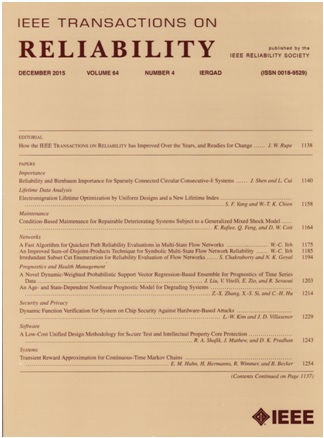基于核希尔伯特空间再现的RUL跨域自适应预测
IF 5.7
2区 计算机科学
Q1 COMPUTER SCIENCE, HARDWARE & ARCHITECTURE
引用次数: 0
摘要
预测剩余使用寿命的数据驱动方法在退化数据分析领域受到了相当大的关注。迁移学习(TL)方法为各种操作设置中的规则学习任务提供了新的可能性。然而,在许多工程应用中,TL的挑战主要来自于目标域中标记数据的稀缺性或高成本,以及目标域中RUL样本的不完全降解。本文提出了一种用于可解释预测的深度跨领域迁移学习模型,该模型有效地利用了领域自适应(DA)技术在减轻领域分布差异方面的优势,并利用了变分自编码器(VAE)模型固有的卓越可视化能力。该方法将VAE框架与回归网络相结合,利用数据分析技术对特征空间进行对齐,实现了未标记目标域数据的跨域RUL预测,实现了整个退化过程的跨域可视化。在域自适应中考虑了再现核希尔伯特空间来控制假设空间的复杂度。通过对实际C-MAPSS数据集的分析,验证了该方法的有效性。本文章由计算机程序翻译,如有差异,请以英文原文为准。
RUL Prediction With Cross-Domain Adaptation Based on Reproducing Kernel Hilbert Space
Data-driven methods for predicting remaining useful life (RUL) have received considerable attention in the field of degradation data analysis. The transfer learning (TL) method offers new possibilities for RUL tasks in various operational settings. However, in many engineering applications, challenges in TL arise mainly from the scarcity or high cost of labeled data in the target domain, coupled with incomplete degradation of RUL samples within the target domain. This article proposes an innovative model named deep cross-domain transfer learning for interpretable prediction The model effectively harnesses the advantages of domain adaptation (DA) techniques in mitigating domain distribution disparities and also uses the exceptional visualization capabilities inherent in the variational autoencoder (VAE) model. This method integrates the VAE framework with regression networks and utilizes DA techniques to align feature spaces, achieving cross-domain RUL prediction with unlabeled target domain data and cross-domain visualization of the entire degradation process. The reproducing kernel Hilbert space is considered in domain adaption to control the complexity of hypothesis space. The effectiveness of the proposed method is demonstrated by analyzing the real C-MAPSS dataset.
求助全文
通过发布文献求助,成功后即可免费获取论文全文。
去求助
来源期刊

IEEE Transactions on Reliability
工程技术-工程:电子与电气
CiteScore
12.20
自引率
8.50%
发文量
153
审稿时长
7.5 months
期刊介绍:
IEEE Transactions on Reliability is a refereed journal for the reliability and allied disciplines including, but not limited to, maintainability, physics of failure, life testing, prognostics, design and manufacture for reliability, reliability for systems of systems, network availability, mission success, warranty, safety, and various measures of effectiveness. Topics eligible for publication range from hardware to software, from materials to systems, from consumer and industrial devices to manufacturing plants, from individual items to networks, from techniques for making things better to ways of predicting and measuring behavior in the field. As an engineering subject that supports new and existing technologies, we constantly expand into new areas of the assurance sciences.
 求助内容:
求助内容: 应助结果提醒方式:
应助结果提醒方式:


